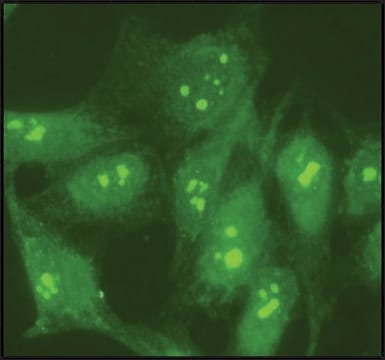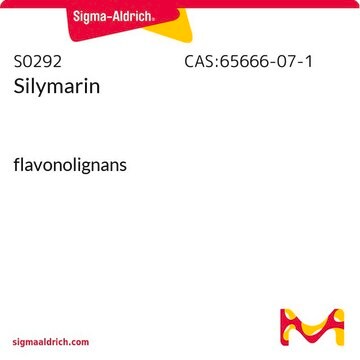N6288
Anti-NucleolinAtto 488
1.5-3.0 mg/mL, affinity isolated antibody, buffered aqueous solution
Synonyme(s) :
Anti-NCL, PROTEIN C23
About This Item
Produits recommandés
Source biologique
rabbit
Conjugué
Atto 488 conjugate
Forme d'anticorps
affinity isolated antibody
Type de produit anticorps
primary antibodies
Clone
polyclonal
Forme
buffered aqueous solution
Espèces réactives
human, mouse, rat
Conditions de stockage
protect from light
Concentration
1.5-3.0 mg/mL
Technique(s)
direct immunofluorescence: 0.5-1.0 μg/mL using human HeLa, rat NRK and mouse 3T3 cells
Fluorescence
λex 500 nm; λem 522 nm in PBS
λex 500 nm; λem 522 nm
Numéro d'accès UniProt
Conditions d'expédition
dry ice
Température de stockage
−20°C
Modification post-traductionnelle de la cible
unmodified
Informations sur le gène
human ... NCL(4691)
mouse ... Ncl(17975)
rat ... Ncl(25135)
Description générale
Find more information here
Spécificité
Immunogène
Application
Actions biochimiques/physiologiques
Forme physique
Stockage et stabilité
Clause de non-responsabilité
Not finding the right product?
Try our Outil de sélection de produits.
Produit(s) apparenté(s)
Code de la classe de stockage
10 - Combustible liquids
Classe de danger pour l'eau (WGK)
WGK 2
Point d'éclair (°F)
Not applicable
Point d'éclair (°C)
Not applicable
Équipement de protection individuelle
Eyeshields, Gloves, multi-purpose combination respirator cartridge (US)
Certificats d'analyse (COA)
Recherchez un Certificats d'analyse (COA) en saisissant le numéro de lot du produit. Les numéros de lot figurent sur l'étiquette du produit après les mots "Lot" ou "Batch".
Déjà en possession de ce produit ?
Retrouvez la documentation relative aux produits que vous avez récemment achetés dans la Bibliothèque de documents.
Articles
Immunoblotting (Western blot transfer) is a common technique in modern proteomics research.
Notre équipe de scientifiques dispose d'une expérience dans tous les secteurs de la recherche, notamment en sciences de la vie, science des matériaux, synthèse chimique, chromatographie, analyse et dans de nombreux autres domaines..
Contacter notre Service technique







